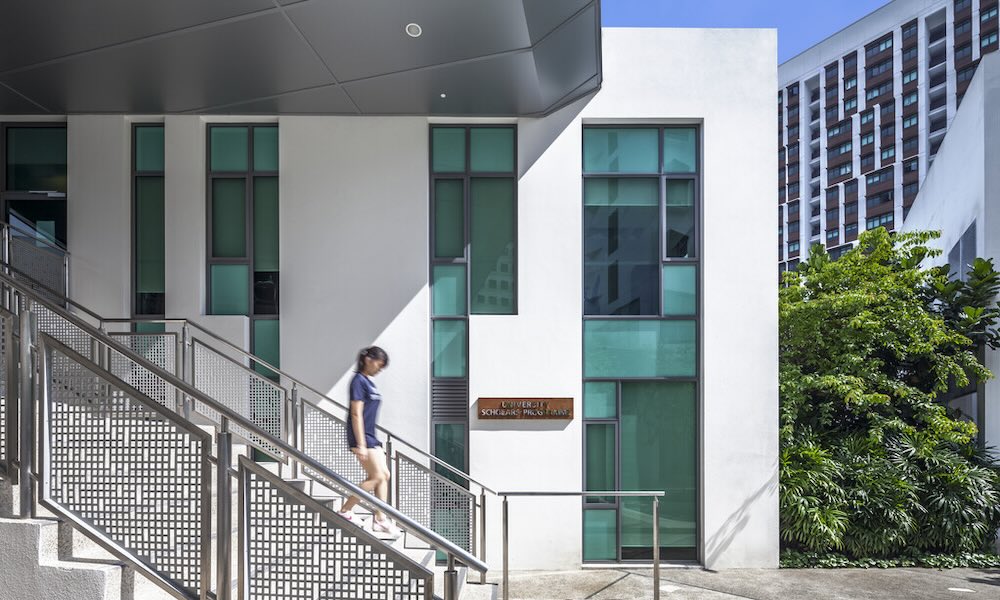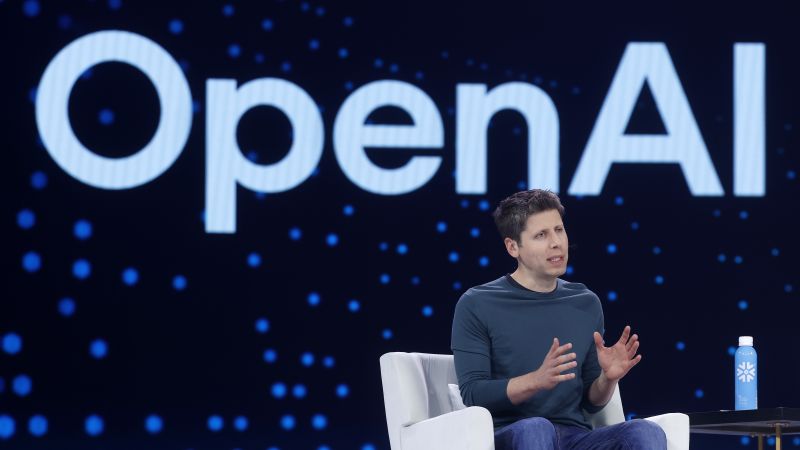By Splash
Copyright splash247

What steps is Singapore taking to future-proof its maritime talent pipeline as automation and AI reshape many careers? The second installment in our brand new Singapore Market Report magazine.
Singapore has built its reputation as ta global maritime hub, but as automation, artificial intelligence, and the green transition reshape shipping, the city-state faces an equally critical challenge on shore: ensuring it has the people to power the industry of tomorrow.
From seafarers to superintendents, from coders to chartering executives, the question is no longer simply about filling jobs. It is about future-proofing talent pipelines, reshaping maritime identity, and convincing the next generation that this centuries-old industry still offers a future worth betting on.
Raymond Peter, managing director at BSM Singapore, stresses that Singapore is actively redesigning roles to reskill and upskill current workers, in order to match the industry’s accelerating digitalisation. “This initiative aims to support a more digitalised, high-tech, and sustainable maritime industry,” he says. BSM works closely with the Maritime and Port Authority of Singapore (MPA) on programmes such as the Management Associates scheme and scholarships via the Singapore Maritime Foundation. These pathways, Peter notes, not only pay for students’ degrees but also give them part-time work and full-time jobs upon graduation.
Lorenzo Agatiello, Asia Pacific director at recruiter Faststream, points to the scale of the investment. “MPA, the Singapore Maritime Foundation (SMF), and the Singapore Shipping Association (SSA) are working closely to develop skills in digitalisation, AI, and decarbonisation. Flagship initiatives such as the MaritimeONE scholarships attract and support young talent entering the industry, while Workforce Singapore has rolled out mid-career pathways to help existing professionals transition into new roles.”
For Columbia Shipmanagement’s Asia CEO, Demetris Chrysostomou, training is the backbone of the transition. “The country has placed a strong emphasis on enhancing training and upskilling for its existing workforce through initiatives like OneLearn Global and by leveraging its tertiary education institutions,” he explains. “Businesses are incentivised to adopt relevant technologies that support long-term growth and resilience, ensuring the industry keeps pace with rapid technological change.”
The AI effect
Automation and AI loom large in every discussion. Union Marine Management Services managing director Vinay Gupta insists the fundamentals will still matter. “Automation and AI may reshape job descriptions, but skill sets will remain the key — ensuring that information and analysis are placed in the right perspective and translated into decisions that keep businesses running smoothly,” he says. What sets Singapore apart, Gupta argues, is “alignment: government, academia, and industry pulling together in harmony — a rare synergy that few other hubs can claim.”
Wilhelmsen Ship Management’s CEO and president, Haakon Lenz, agrees that Singapore is taking a long-term approach. “Like many nations, Singapore is approaching future readiness from the grassroots level, integrating automation and AI into the school education system,” he says. Structured internships, mentorships, and reskilling programmes on alternative fuels are creating a workforce that is “future-ready and globally competitive.”
Recruiter Ryan Kumar of Direct Search Global sounds a warning: “The real disruption isn’t AI — it’s the gap between the pace of change and how fast we’re preparing people for it. Future-proofing isn’t just about plugging skills gaps — it’s about building an ecosystem that makes maritime careers worth aspiring to.”
The retention challenge
Attracting talent is one thing; keeping it is another. Kumar is blunt: “The hardest part isn’t attracting talent. It’s convincing them to stay. Today’s talent — whether they’re cadets, operators, or chartering executives — are looking for more than salary. They want purpose, flexibility, and visibility. If your company still sees talent as a cost centre, the future will see you as a cautionary tale.”
This shift in worker expectations is already reshaping HR strategies across Singapore’s maritime employers. “We need more mentorship,” Kumar argues. “We need to bring human stories back into the equation. And we need to treat upskilling not as a perk — but as a promise.”
Old roots, new stories
If talent is the hardware, maritime identity is the software. For Gupta, Singapore’s identity is “the story of a nation born on the back of trade, strengthened by mastering the sea, and now shaping its destiny by leading in digitalisation and decarbonisation.”
Bureau Veritas vice president for Southeast Asia, Drago Pinteric, frames it in terms of history and innovation. “Maritime identity in Singapore is deeply intertwined with the nation’s history and its role as a gateway between East and West,” he says. Today, it evolves with sustainability, diversity, and technology, reinforced through internships and scholarship programmes that expose young professionals to the sector’s cutting edge.
Others are less convinced the story is landing. “Maritime in Singapore has a very positive connotation and most Singaporeans know that about 15% of GNP are linked to this business,” notes consultant Peter Schellenberger. “However, positive doesn’t mean that young people are much interested to work in maritime — it is just not considered ‘sexy’ and linked to odd or many working hours.”
Kumar puts it even more starkly: “Singapore is a maritime hub, but not yet a maritime nation. Yes, we top the charts in port performance, vessel traffic, and connectivity. But walk through the heartlands and ask the average young Singaporean what a superintendent does — you’ll likely get blank stares.”
That visibility gap, he argues, needs fixing: “You can’t dream of what you don’t know exists.”
Engaging the next generation
Engagement is happening, but the jury is out on whether it is enough. BSM’s Peter highlights initiatives such as Youth@Singapore Maritime Week, where students can tour hydrographic vessels, see drones in action, or visit SIT’s maritime labs. “These initiatives showcase diverse career paths and future trends in the maritime sector,” he says.
Chrysostomou believes branding is key: “The national narrative is shifting from Singapore as merely an entrepôt with natural deep waters to a global maritime hub where trade, technology, and talent intersect. This repositioning helps engage younger generations with a more modern and aspirational vision of the sector.”
Wilhelmsen’s Lenz adds a note of realism: “For shipmanagement operations, having a team that includes professionals with sailing experience is a critical asset. However, such talent is not widely available within the local workforce.” That scarcity makes the role of education even more critical, as local institutions build up a base of technical knowledge for onshore careers.
A sector at a crossroads
What emerges from these conversations is a sector deeply aware of the stakes. On one hand, Singapore offers world-class infrastructure, proactive government alignment, and an expanding ecosystem of scholarships and training schemes. On the other, it struggles with costs, visibility, and an image problem among young Singaporeans.
Pinteric stresses the importance of evolution. “Today, there is a conscious effort to ensure maritime identity evolves in step with sustainability goals, diversity and inclusion, and technological leadership, so that it resonates with younger generations.”
Kumar frames it as a storytelling challenge. “Maritime touches every container, every delivery, every meal on your table. It’s not a sector. It’s an engine. The future of maritime depends on the stories we tell today — not just to the world, but to our own people.”
Why it matters
For Singapore, the prize is enormous. Maritime already contributes around 7% of GDP and employs more than 170,000 people. As Tuas Port comes online and the green transition accelerates, the need for talent will only grow.
Gupta captures the balancing act: “Singapore has a long maritime history, a lustrous present, and a bold vision for the future.” To sustain that trajectory, the talent pipeline must not only keep pace with automation and AI but inspire a new generation to see the industry as relevant, rewarding, and essential.
The question is whether Singapore can shift from being the world’s best maritime hub to becoming a true maritime nation — one where the sector is not just efficient and profitable, but visible, aspirational, and deeply rooted in national identity.
As Kumar warns, “Singapore has built the infrastructure. Now, it’s on us — the employers, the leaders, the recruiters — to make it real.”
To access the whole of Splash’s Singapore Market Report 2025 for free online, click here.



